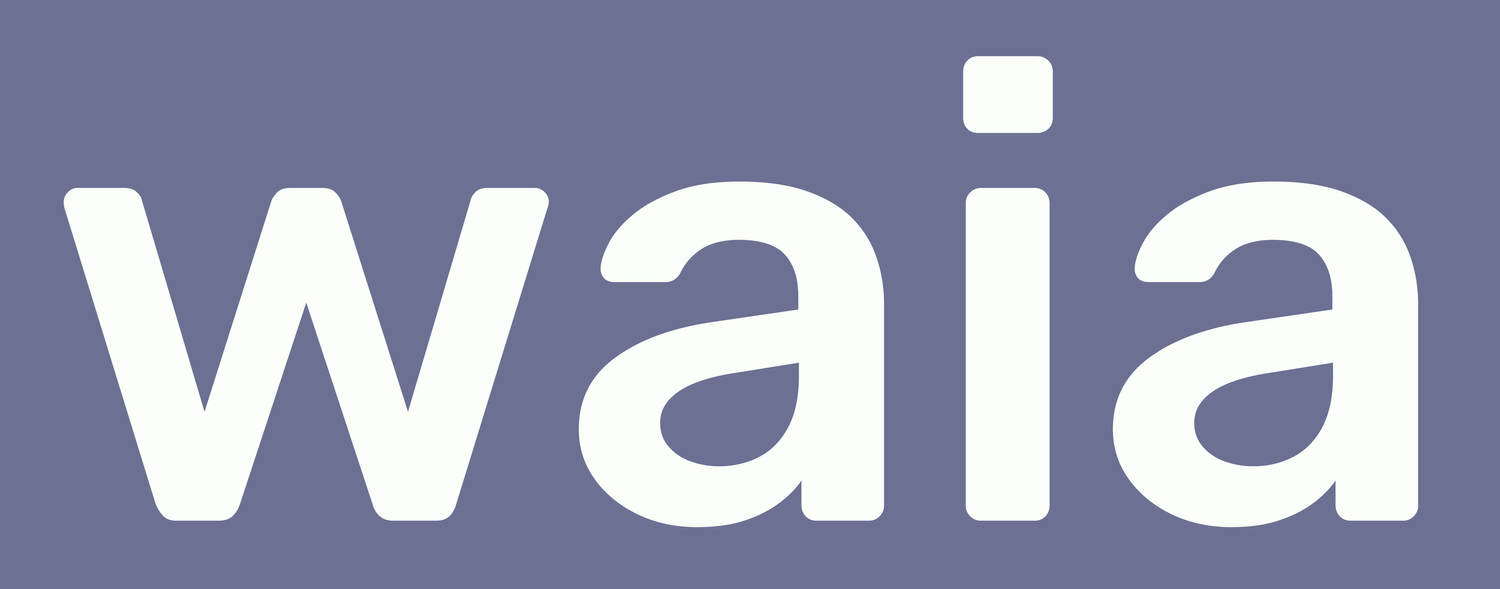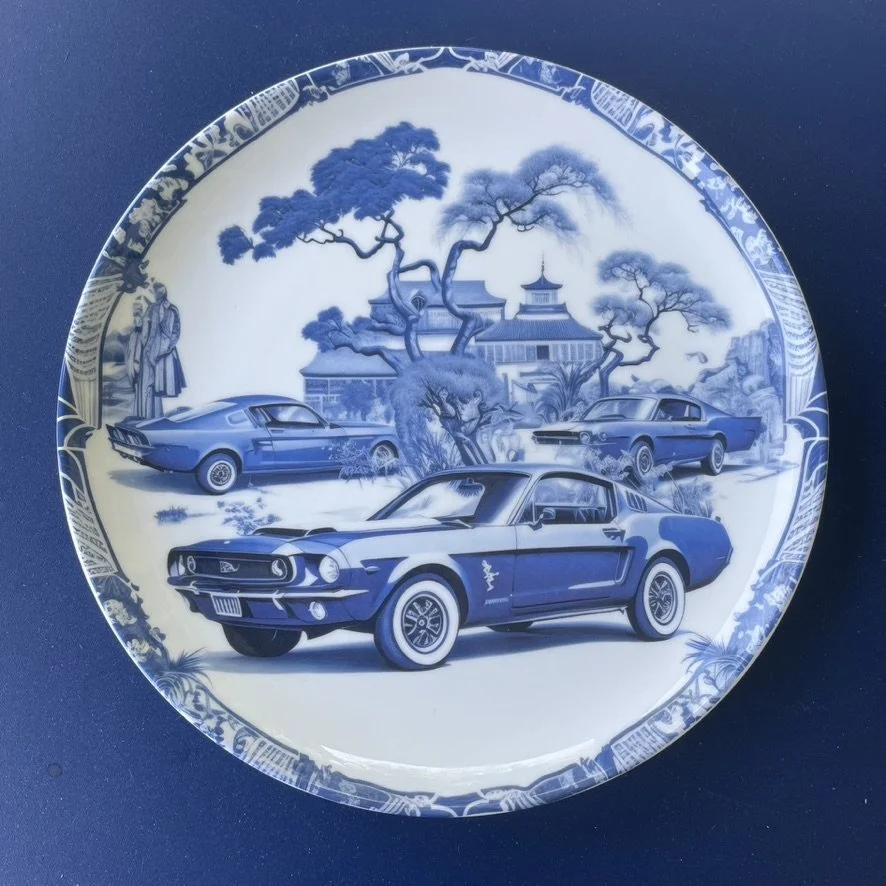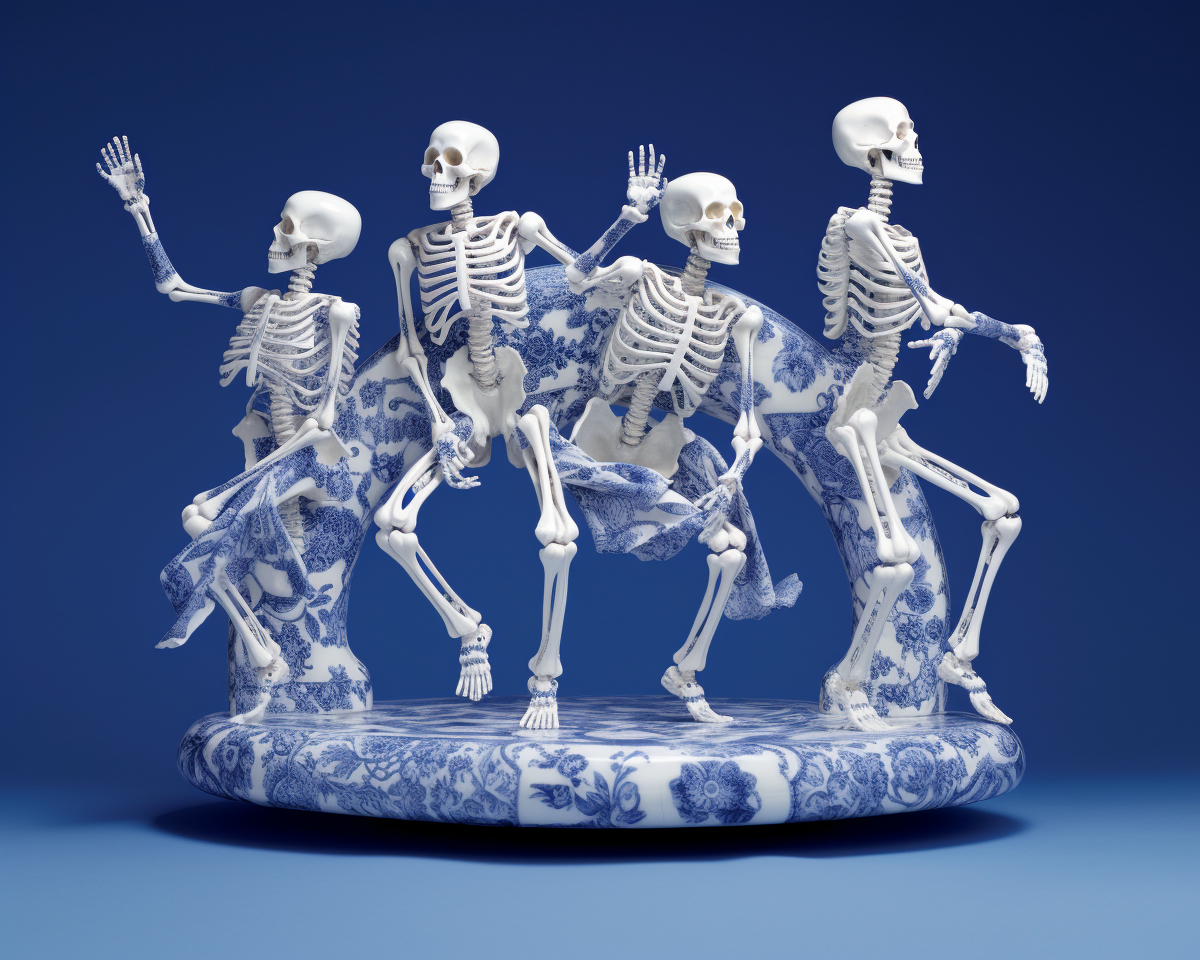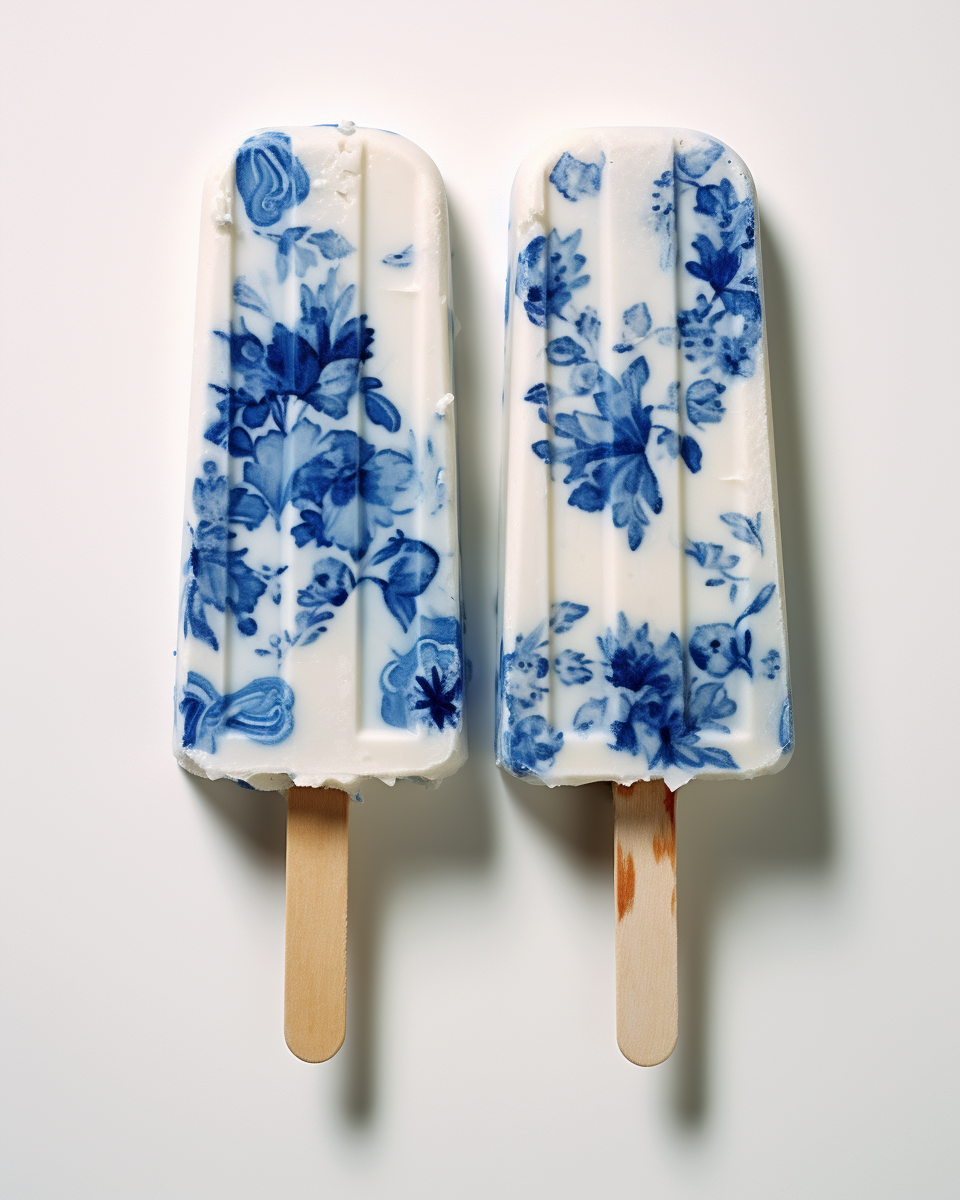Meet Jenny!
Jenny, (IG: @pencilporcelain) a London-based artist, seamlessly combines the cutting-edge world of AI with the timeless elegance of porcelain. Starting her creative journey as a writer, her transition to AI offered a fresh canvas, allowing her to reimagine centuries-old blue and white aesthetic designs on porcelain. Balancing a full-time job and motherhood, Jenny finds solace in her craft, drawing inspiration from nature, and the enchanting landscapes. Sharing her innovative fusion of past and present in this intriguing interview.
Can you tell us a little bit about yourself and how you got interested in AI art?
I first started experimenting with AI after my partner/boyfriend Omar Karim showed me how. It started late 2021 with Gaugan. The process completely blew my mind. It was like discovering a secret key to the universe! As a writer for most of my working life, ideas are the source and for me that comes from using words to imagine things. I then started exploring with other programmes, and became mesmerised by text to prompt AI. Up until now, I had made art using my handwriting and drawing mostly. AI added a whole new opportunity to create!
Who or what are your artistic inspirations, and how do they influence your work?
So much and so many! The artist Matisse is a huge inspiration, and the magical work of the the earth, all its plants, flowers, birds, beasts and oceans... it's the greatest Pinterest board in 3D! Currently, I am hugely inspired by the landscaped surface designs of willow pattern, Spode and other blue and white porcelain plates and dinner services from hundreds of years ago. These have informed my approach in using AI to explore different ways to interpret the blue and white aesthetic.
How do you approach the creative process when working with AI?
I think one of the great marvels of working with AI is it feels like a treasure hunt, or a mission that you have to crack. Often I'll start with an idea for a prompt, and I'll write it, and it comes out so wrong, so then, rather than give up, it feels like a brilliant challenge. How can I trick the AI into giving me the imagery that I want? So I try different phrases, and I shuffle the images, and I try again, and again, and every wrong answer inspires me, so it feels like a beautiful creative dialogue with a being that doesn't understand the human experience. You have to guide it, you have to divine it towards the solution. In a way, this is not different to, say, trying to draw a picture of something in front of you. The pencil doesn't always do what you want. So maybe you rub it out, and you start again, and you practise, and in that trying and trying, or in that believing in the lines that hit the empty page, you find a beauty that feels right. I don't feel that AI is something that takes away from human made art. The process of any art involves exploring, using curiosity and shaping things into something beautiful and resonant. This is all art. It is the human experience of creativity.
Can you share a specific moment that transformed your perspective on AI art?
I think being untrained (I didn't go to art school, I studied Art History with English and American studies at Sussex University in the 1990s), I have always lacked a sense that I can call myself an artist. For me, the act of working with AI has helped me to see that I am an artist. The photographer doesn't credit the camera with creating the work they see through the lens. The writer doesn't credit the pen they used. AI is still a brand new form of creating and therefore is frightening to a lot of people. I'm talking about the method, of course, of interpreting and diffusing whatever we ask of it. I feel grateful to have stumbled across a totally unique way of creating ceramic art simply by using my curiosity and my imagination, and working hard to craft that magic into something people can actually eat off! So any of my plates, I'd say I'm really proud of creating them with the help of AI. Also the monster tiles I made - I wanted to see if it could be possible to create a feeling of old with something new. The monster tiles make you look twice. At first you might think they are from the 17th century, but then you see they are riding on motorbikes, and driving muscle cars, and smoking weird looking jazz cigarettes... it's creating the unexpected and celebrating the consequence of that!
How do you balance your work in AI art with other professional or personal pursuits?
Alongside creating art, I have an intensive full time job, and I am a mum of two young adults. All my AI work happens either early in the morning, late at night, or on the train to and from work. My partner is an incredible AI artist and a genius. One of the magical things we love to do is spoon and make art on our phones, then share the results and laugh our heads off at the magic. What I would say is that creating art no matter how you do requires discipline and regular practise. I find the practise is a wonderful way to escape my day, it's a creative outlet, so it's always a positive experience, even if things don't work out how I imagine them to. I sometimes sit and draw, I use procreate and doodle endlessly.
AI has kinda taken over as my go-to way to make my ideas into art. So I would say whether you are a parent with busy home life, or a job that is all-consuming, carve out time outside of those in a boundaried way. Allow yourself a set time of exploring and investigating the medium. Even if it's 15 minutes on your lunch break! Just explore and have fun!!!! The rest will follow. I remember a wonderful quote that has stayed with me, by Brene Brown, and it is that stories matter, even if nobody is listening. It's not about anybody else. Making art - AI or not - is about you. Your opportunity to express yourself. It can enrich your life and bring you a sense of balance because YOU are choosing to create, and be an artist.
How has working with AI in art influenced your mental and emotional wellbeing?
I find it deeply therapeutic. Last year, before I discovered and created my ceramic art with AI, I was using AI to try and understand my dreams. I have been doing a lot of inner child work with a therapist, and was able to visualise some incredibly powerful images that embody the experience I was having, connecting to a younger me, creating an inner parent in the form of an eagle... listening to and connecting to the spirit world through dreams, exploring the imagery of the crow and celebrating their magical qualities. A lot of the work I do with AI is a form of healing. I don't always share that work on my social media. It's deeply personal. I have been going through the transformational stage of Menopause and asked the AI what that looked like, and it was extraordinary to see it represented back to me! Maybe I'll share those, as they are kinda fascinating! So in terms of mental and emotional wellbeing I'd say it has enhanced my inner world by aiding an outlet to my inner thoughts and ideas and feelings.
In your opinion, how does AI redefine the concept of creativity and artistic agency, and how do you see it impacting the future of art?
I feel that if you are an imaginative being, you will always create, no matter what. AI is definitely redefining how we create. What does artistic agency look like now? I feel it is no different to any tool we use. One thing to be mindful of: If you are emulating another artist through AI, it is pretty obvious to spot. And if you are using Chat GPT to write stuff, it still needs to be edited by you to humanise it. I don't know what my place will be in that future... I would like to bring more of what I create into the world, however that will require working with human hands. Currently the blue and white ceramic designs I create may be through AI exploration, but it is the craft and talent of humans that then translates those ideas into actual physical objects. Transferware is hundreds of years old, and I like to think that by working with AI in the way that I am now, there is an anchor of my aesthetic approach into the future heritage of blue and white decorative art.
What role do you think AI art can play in highlighting social issues?
If you ask the AI to show you, say, a couple, say, a happy couple, the default is almost always to white skin and straight. If you ask the AI to show you a beautiful woman, she will almost always be white. This is disappointing and insane and highlights the gender and racial bias in the AI engines! So you add other phrases into your prompt and can find your way to a more diverse and inclusive representation of humanity. I urge you to look at the work of Omar Karim to see just how we as artists can challenge those prejudices for the better. Whether your creative purpose is highlighting social issues or inventing the most insane ice cream sundae, it's on the artist to do what they want and express what they care about.
If you could collaborate with any artist, living or not, who would it be and why?
I would LOVE to have collaborated with Henri Matisse. His approach to making art is so joyful. Even when he was bedridden and unable to paint, he continued to make the most magnificent art, using giant scissors and cutting out shapes and making beautiful collages. He is one of my heroes.
What advice or encouragement would you give to aspiring women who are interested in pursuing AI art?
I would say try not to look at everyone else. This is your journey and your life. If you want to make art, AI might be the way to unlock something for you. However it doesn't have to define who you are as an artist. It can be one element of your approach, or it can be everything! It doesn't matter. What matters is how you feel in the creative process and what you get out of it for yourself. If others love it too, well... isn't that a plus! Experiment! Have fun! There are no rules!!!!
For more of Jenny’s incredible work, make sure to visit her Instagram account: @pencilporcelain and her blue and white emporium selling plates, tiles and prints: pencilporcelain.com











